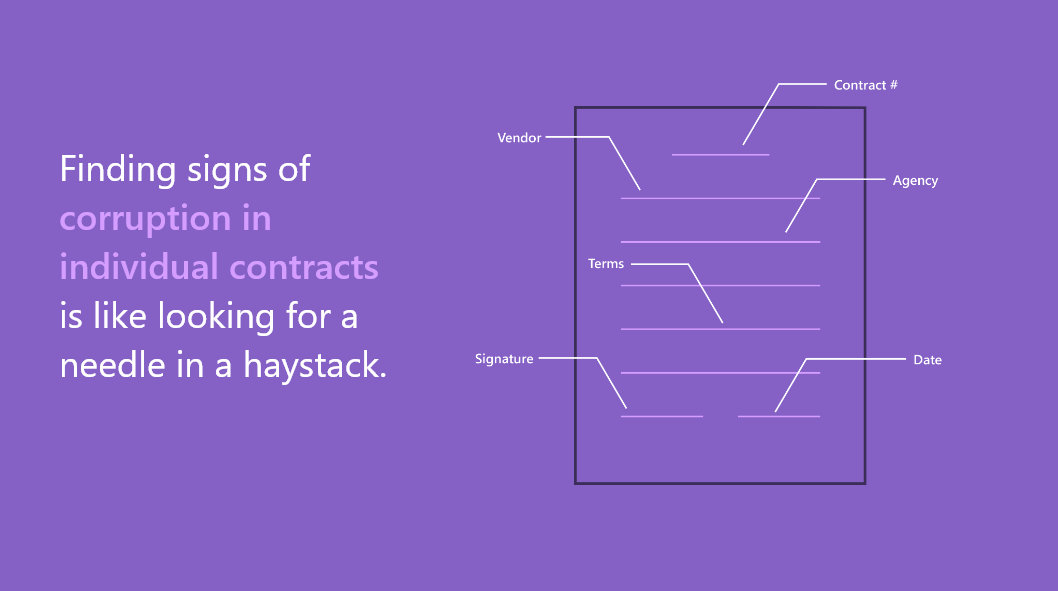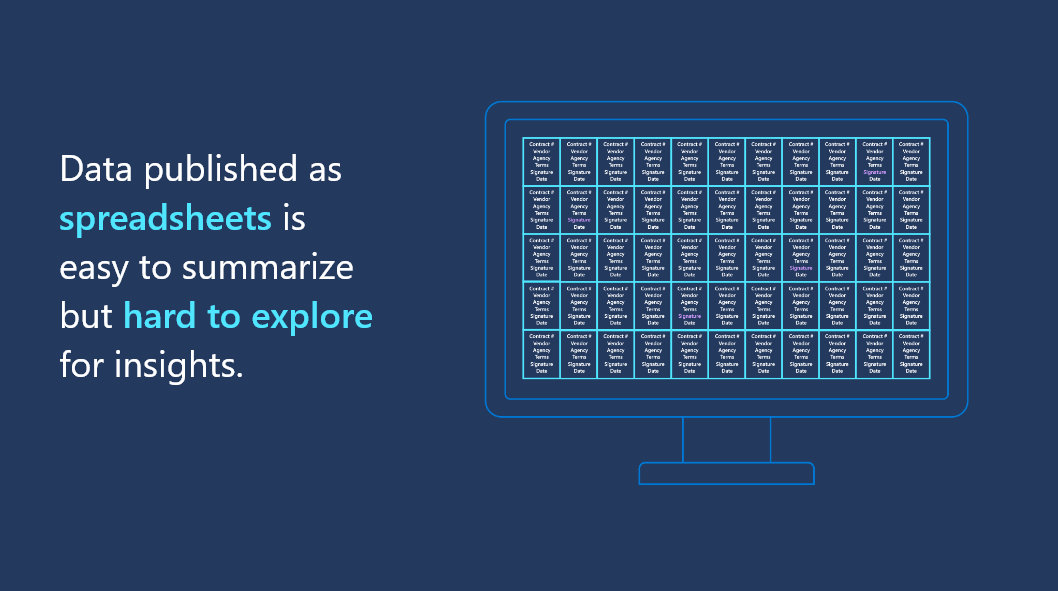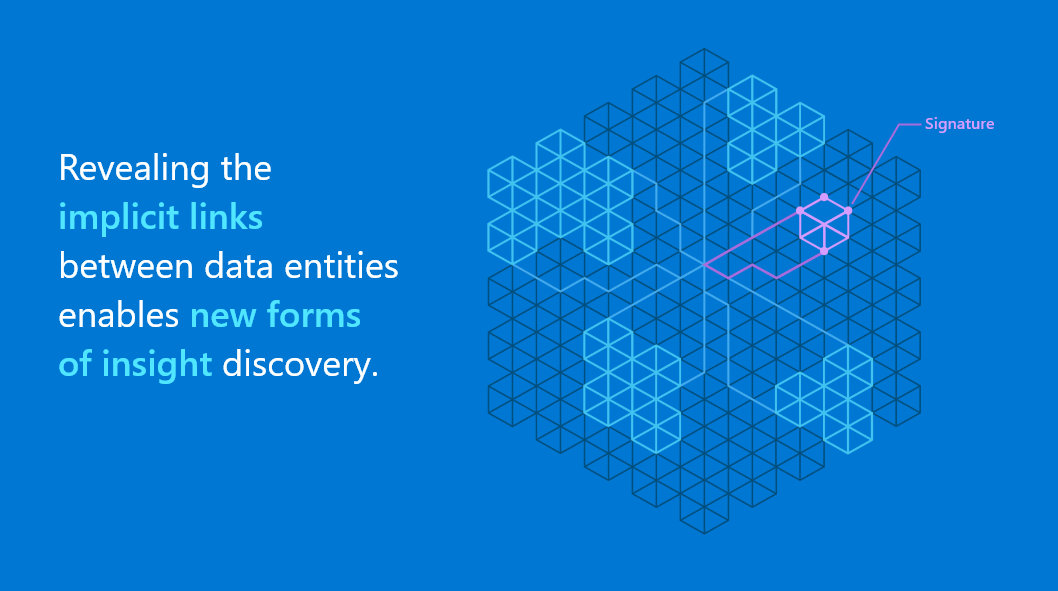Tackling corruption with transparency and technology

A fundamental question when attempting to tackle any sufficiently complex problem is, “How can data make a difference?” While this question applies to all problem areas across business, government, and society, it especially applies to problems such as corruption that cut across each of these areas and blight individual lives and communities on a global scale.
The problem, however, is illicit activities are typically conducted in ways that attempt to evade detection or prevent tracing individual acts back to the actors who perpetrated them. To understand such activities, or indeed any complex real-world activity, we need new ways to collect, connect, and make sense of data in ways that allow us to discover fresh insights, (for example, a suspicious entry in a government contract, as illustrated in Figure 1 below).

For our research team at Microsoft, this means focusing on the patterns of relationships behind the activity. To do this, we use network science, driven by technical advances in cloud computing, machine learning, and visualization, to capture, model, and predict relationships in new ways.
Within Microsoft, these techniques are used more broadly to understand and map relationships in a variety of areas – to combat corruption and help people get better search results or navigate workplaces more efficiently. Our goal now is to make these tools available to businesses, governments, and NGOs so they can use them to tackle some of the most serious challenges facing people and society around the world – starting with the fight against corruption.
Each year, governments award nearly $10 trillion in contracts for public goods and services to be delivered by private firms, and each year, some percentage of that money is corruptly diverted to companies by means of bribery, self-dealing, nepotism, fraud, and collusion. The result is not just a theft of public assets, but damage to public trust in government and tangible harm to millions of people who depend on the honest administration of public resources to live and work.
One of the biggest challenges in combating corruption in public procurement is that corrupt actors can be very good at covering their tracks. Imagine if we could change our focus from individual contracts and focus on a higher-level view of supplier competition. This change in focus allows us to spot the irregularities that might point to corruption.

At the core of our approach is a network model of how entities relate to one another over time, allowing the identification of both statistical patterns and anomalies. Our hope is that visualizing and exploring these networks and insights side-by-side will enable both professional and citizen analysts alike to view, explore, and make sense of the data for themselves – often for the first-time –because legacy analytical tools such as spreadsheets do not do a good job of surfacing subtle patterns in data (see figure 2 above).
By making data on public resources and the means to analyze it more transparent to anyone, our approach gives corruption fewer places to hide. Having an idea about how to solve a problem in principle is only a small part of any actual solution, however. There is also the need for real data and domain expertise, which means identifying the partners and datasets with the potential to bridge the gap between research theory and real-world practice. Better data management and visualization methods can facilitate that (see figure 3 below).
In July 2020, Microsoft President Brad Smith and then President of the Inter-American Development Bank (IDB), Luis Alberto Moreno, announced a new initiative to develop high-impact projects using advanced analytics and cloud computing to help reduce corruption, increase transparency, and foster integrity in Latin America and the Caribbean (LAC). Our research team had already explored the application of network science to corruption in procurement in a collaboration with the World Bank, and shared the results at the Anti-Corruption Collective Action Conference 2018. This was an ideal opportunity to continue developing our network-oriented approach to budgetary and procurement transparency while building on Microsoft’s long-standing relationship with the IDB.

Microsoft ACTS partnered with the IDB Transparency Fund initiative and IDB’s InvestmentMap (MapaInversiones), providing rich data on budget and public procurement activity. Together, we were ready to begin the process of translating these research ideas into new tools to help make information on the use of public resources available to all.
With the support of Microsoft ACTS in partnership with the IDB Transparency Fund initiative and IDB’s Mapa Inversiones providing rich data on budget and public procurement activity, we were ready to begin the process of translating these research ideas into new tools that could help make information on the use of public resources available to all.

